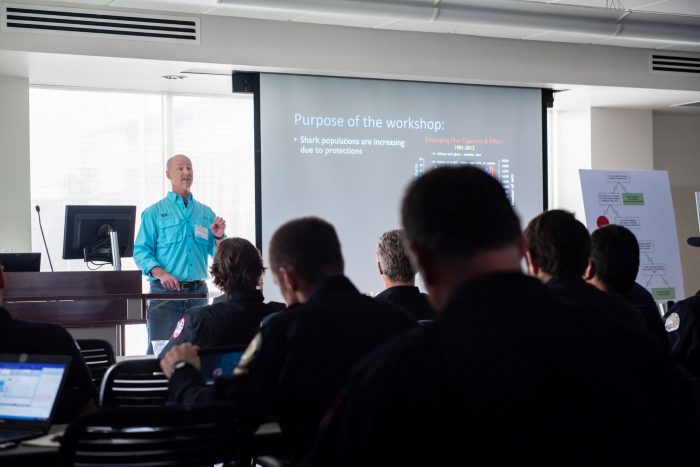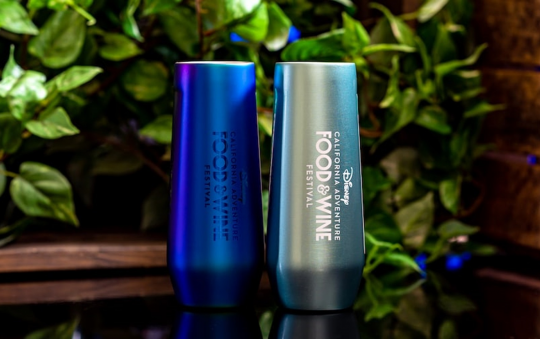
Lifeguards and other first responders serving California communities ranging from the Central Coast to the Mexican border gathered Friday at Long Beach State University to learn about new developments helping their efforts to keep beachgoers safe from sharks.
Long Beach State marine biologist Chris Lowe, director of the campus’ Shark Lab, hosted the responders who met for the 2019 Southern California Shark Workshop. Experts led discussions on such topics as providing first aid to shark bite victims, beach safety education, and using technology to monitor shark activity and reduce the probability of shark incidents.
The population of white sharks living near California has rebounded in recent years, and the ocean waters near Southern California are nursery habitat for the animals. That means beachgoers and lifeguards need to prepare for possible shark encounters.
“This increases the likelihood of interactions,” Lowe said. “It doesn’t have to be a negative interaction.”
Lowe and other Shark Lab researchers have employed such devices as acoustic buoys and aerial drones to track white sharks near the California coastline. The lab has recently acquired an unmanned submersible drone that expands its capability to monitor the underwater environment and record video of sharks and other marine life.
The submersible is named in recognition of Assemblyman Patrick O’Donnell, an alumnus and Shark Lab supporter. State government appropriated $3.75 million in the current state budget to help lab researchers study white shark activity and contribute to public safety efforts.
“The Southern California Shark Workshop is the result of the hard work and strong partnerships of the CSU Long Beach Shark Lab and lifeguards up and down California’s southern coast,” O’Donnell said. “I thank Dr. Lowe for organizing this workshop to ensure that our first responders have the information they need to protect beachgoers.”
Although shark bites are rare events off California, shark encounters have increased in recent years, and the population of white sharks swimming near the state’s coastline has rebounded. Lifeguards anticipate the animals are here to stay.
“In 2014, white shark sightings increased significantly within California waterways. Current data indicates the white shark population may continue to utilize coastal waterways for nursery habitat and feeding on a more frequent basis,” according to Brian Ketterer, southern field division chief for California State Parks, and Encinitas Marine Safety Capt. Larry Giles.
The Shark Lab’s planned educational outreach includes distributing a shark safety comic book to school children, presenting safety information at beachside “Shark Shacks” and the lab’s annual on-campus event “Sharks @ the Beach,” scheduled for July. Programming for this year’s Sharks @ the Beach will include lessons designed to help people who fish from California’s piers avoid catching or attracting sharks.







